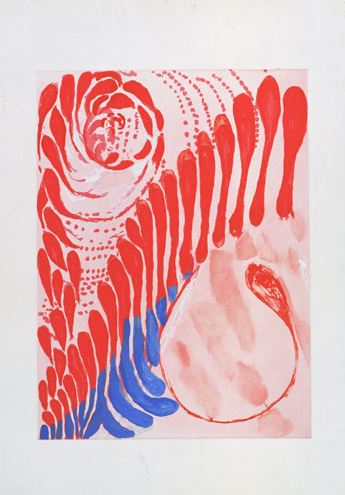Aquatint
The aquatint technique, which has effects resembling watercolor, is usually undertaken in a print workshop where specialized materials and equipment are available. However, some of Bourgeois’s notes from the 1940s indicate that she studied the necessary steps and succeeded in making a few aquatints at home. Later, after the resurgence of her printmaking in the 1990s, Bourgeois depended on the expertise of a professional printer, such as Felix Harlan of Harlan & Weaver, when she wanted to incorporate aquatint. She might choose the technique if her source drawing included watercolor or other tonal areas. On the other hand, she also liked to simply add watercolor directly to her prints, since that method gave her the most control.
Generally, Bourgeois shied away from complex printmaking techniques and preferred more direct ways of working. Also, she had a certain fear of acid, which is required in aquatint. She avoided using acid herself and did not take advantage of the assistance that would have been provided at a print workshop. Temperamentally, she was not suited to the workshop environment and this was especially evident in her later years. She felt most comfortable when printers came to her house to collaborate, and she especially liked to take advantage of the small printing presses she kept on the lower level.
